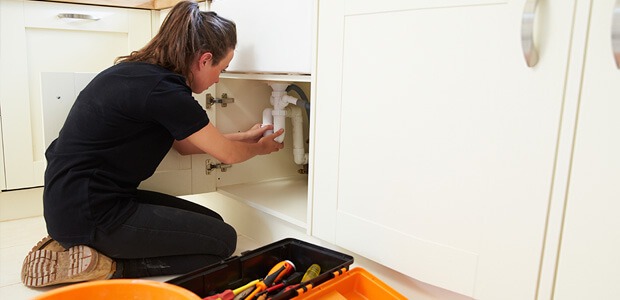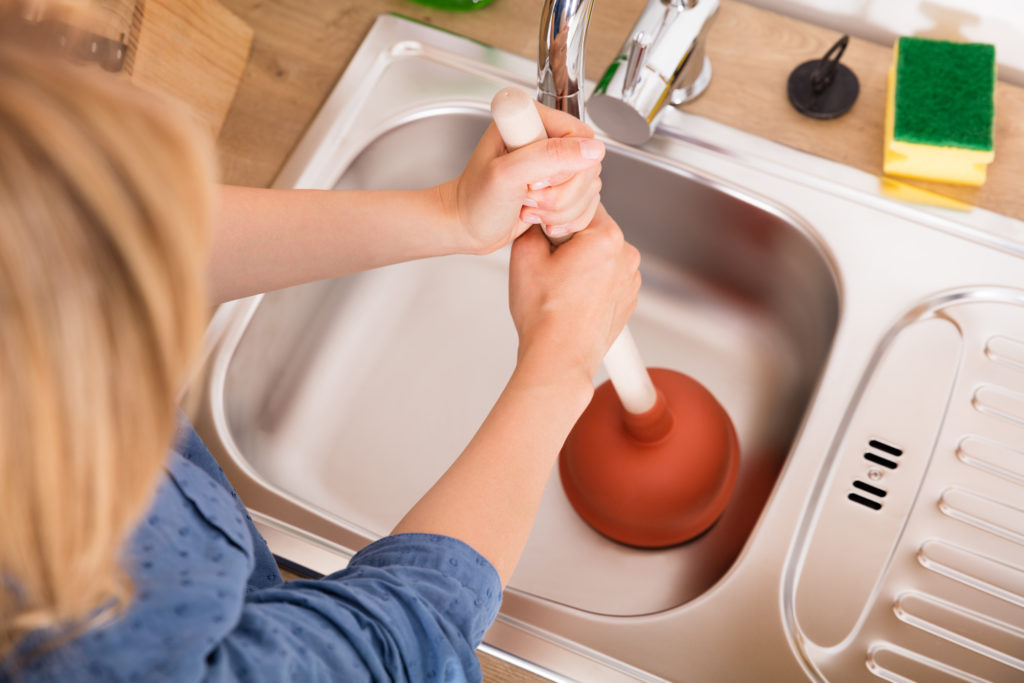Tips for Handling a Blocked Drain Before Contacting Professional Plumbers
Tips for Handling a Blocked Drain Before Contacting Professional Plumbers
Blog Article
We have encountered this article relating to What I learned from trying to deal with a clogged drain down the page on the net and reckoned it made good sense to discuss it with you over here.

Intro
Managing a blocked drainpipe can be an irritating experience, disrupting daily activities and potentially causing damage to your building. Nevertheless, prior to connecting to pipes specialists, there are actions you can require to address the problem on your own. In this guide, we'll explore DIY services and preventive measures to deal with an obstructed drainpipe successfully.
Determining the Concern
The very first step in resolving a blocked drainpipe is acknowledging the indicators. Sluggish water drainage, gurgling noises, foul odors emanating from drains, or water backing up prevail indicators of an obstructed drainpipe. Identifying these indicators early can aid prevent additionally problems.
Typical Sources Of Obstructed Drainpipes
Comprehending the variables that contribute to drain blockages is important for reliable resolution. Typical offenders consist of hair, soap scum, oil, food particles, and foreign objects like hygienic products or paper towels. Tree roots getting into below ground pipes can also trigger significant clogs.
Do it yourself Solutions
For minor clogs, several DIY solutions can be efficient. Putting boiling water down the drainpipe can assist dissolve oil and debris. Baking soda and vinegar or a combination of salt and baking soft drink can act as natural cleaners. Utilizing a plunger or plumbing serpent to remove obstructions is one more option.
Tools and Equipment
Having the right tools on hand can make DIY drain cleaning much more reliable. A bettor is a functional tool for clearing clogs in sinks, bathrooms, and showers. A pipes snake or auger can get to deeper blockages, while drainpipe cleansing chemicals can be used very carefully for persistent blockages.
Preventive Measures
To prevent future blockages, taking on preventive measures is critical. Install drainpipe guards or filters to catch hair and debris prior to they get in the pipelines. On a regular basis flush drains with warm water to dissolve oil accumulation, and prevent dealing with grease or solid waste down the drain.
When to Call an Expert
While do it yourself remedies can solve small blockages, specific indicators indicate the requirement for specialist support. Consistent blockages, foul odors in spite of cleaning initiatives, or several drains supporting at the same time are red flags that call for experienced intervention.
Choosing the Right Plumbing Service
When choosing a plumbing solution, take into consideration factors such as experience, licensing, and consumer reviews. Select a credible plumbing with a record of high quality handiwork and transparent prices methods.
Expense Considerations
The price of professional drain cleaning services can vary depending upon the severity of the clog and the plumbing technician's rates. Demand quotes from several carriers and inquire about any type of surcharges to ensure transparency and stay clear of shocks.
Security Precautions
When trying do it yourself drainpipe cleaning, prioritize security. Wear safety handwear covers and eyewear to stay clear of contact with harmful chemicals or bacteria. Never blend different drain cleansing items, as this can produce dangerous fumes.
Case Studies
Real-life examples illustrate the efficiency of DIY remedies and the relevance of prompt expert intervention in settling drainpipe obstructions.
Final thought
By following the ideas detailed in this overview, you can properly deal with obstructed drains pipes and protect against future plumbing issues. Whether choosing do it yourself options or looking for expert help, timely action is vital to maintaining a healthy and balanced plumbing system and maintaining the stability of your home.
How to Clear a Clogged Drain Yourself (And When to Call In the Professionals)
What Can Clog a Drain
Dirt Skin flakes Hair Grease Soap scum Food Offset pipes Tree roots Small objects Mineral buildup DIY Tricks to Unclog a Drain
You can fix this! Once you have identified the source of the clog (or have a vague idea), you can try one or a combination of these fixes in order to clear your plumbing.
Wire Hanger or Snake
Untangle and clear out hair from a drainpipe with a homemade snake. Use a straightened-out wire hanger with a 90-degree angle hook to locate the clog and drag out any unwanted material.
Remember not to push the clog further down to where the wire hanger cannot reach! If you need to follow up with a plunger, give it a try. Your efforts might be more successful after it’s been wire-snaked.
If you want to get fancy and don’t have a wire hanger to spare, head to the store and pick up a hand-operated drain snake. You can get one for $10-$30. It may save you the hassle, and provide additional length to reach deep into the clogged pipe.
Plunger
A cup plunger has a suction cup attached to a wooden handle. The rubber creates a seal around the drain, and increases the pressure force of the plunger.
Plunge for 30-second increments to loosen the clog. This may need to be repeated over the course of 15-20 minutes. Once plunged, run the water to flush the remaining material out of the drain.
Remember– never use a plunger if you have used a chemical drain cleaner. These chemicals can splash up from the force of the plunger and cause serious injury or burns.
Boiling Water
Hot water can sometimes break up materials into a flushable amount. Dirt, grease, and soap buildup requires heat in order to unstick from surfaces.
Take your kitchen kettle and heat your water to a boil. Once it reaches a rolling boil, pour it directly down the drain into the blockage. Carefully follow with plunging, if necessary.
Don’t worry if this takes more than one try! It can often take multiple kettles and repeated plunging in order to clear a particularly stubborn clog.
Chemical Drain Cleaner
As a last resort, pick up a bottle of chemical drain cleaner. Drain-cleaning chemicals are potent, and not very good for the environment.
You may need to wear protective eyewear in gloves before handling your bottle of chemical drain cleaner. Follow the instructions printed on the bottle, and flush with water as soon as the instructions allow. Do not follow with plunging.
Baking Soda and Vinegar
As a safer alternative to chemical drain cleaner, baking soda and vinegar can create a chemical reaction that clears tough clogs.
Combine one cup of cleaning vinegar with one cup of boiling water, and set aside. Once you have done this, pour half a cup of baking soda down the drain. Give the baking thirty seconds to settle and cover a large portion of the problem drain.
Following the baking soda, pour down your vinegar and hot water solution. Once the vinegar and baking soda combine, the mixture will bubble and fix. Let this reaction fizzle in the drain for about an hour.
After an hour, follow with a kettle’s worth of hot water. The heat and liquid should flush out any remaining material.
When to Call a Plumber
If your DIY attempts haven’t cleared your clog drain, it’s time to call in a professional. It’s not worth losing access to your kitchen sink or high-traffic bathroom. A clog in a vital area can keep you from the things you’d rather be doing, and derail your routine.
Anytime a clog is causing water to spread is a time to call in a plumbing service. What starts out as a little bit of water can quickly grow into serious, expensive water damage.
Additionally, a serious clog can result in burst pipes or serious leaks. Make sure you know when to take it seriously!
https://myguysnow.com/how-to-clear-a-clogged-drain-yourself-and-when-to-call-in-the-professionals/

I discovered that content on What I learned from trying to deal with a clogged drain when browsing on the search engines. Do you know someone else who is fascinated by the niche? Please feel free to share it. I take joy in reading our article about How to handle a clogged drain in your home.
Click Here Report this page